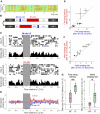Effect of Darkness on Intrinsic Motivation for Undirected Singing in Bengalese Finch (Lonchura striata Domestica): A Comparative Study With Zebra Finch (Taeniopygia guttata)
- PMID: 35694395
- PMCID: PMC9174599
- DOI: 10.3389/fphys.2022.884404
Effect of Darkness on Intrinsic Motivation for Undirected Singing in Bengalese Finch (Lonchura striata Domestica): A Comparative Study With Zebra Finch (Taeniopygia guttata)
Abstract
The zebra finch (ZF) and the Bengalese finch (BF) are animal models that have been commonly used for neurobiological studies on vocal learning. Although they largely share the brain structure for vocal learning and production, BFs produce more complex and variable songs than ZFs, providing a great opportunity for comparative studies to understand how animals learn and control complex motor behaviors. Here, we performed a comparative study between the two species by focusing on intrinsic motivation for non-courtship singing ("undirected singing"), which is critical for the development and maintenance of song structure. A previous study has demonstrated that ZFs dramatically increase intrinsic motivation for undirected singing when singing is temporarily suppressed by a dark environment. We found that the same procedure in BFs induced the enhancement of intrinsic singing motivation to much smaller degrees than that in ZFs. Moreover, unlike ZFs that rarely sing in dark conditions, substantial portion of BFs exhibited frequent singing in darkness, implying that such "dark singing" may attenuate the enhancement of intrinsic singing motivation during dark periods. In addition, measurements of blood corticosterone levels in dark and light conditions provided evidence that although BFs have lower stress levels than ZFs in dark conditions, such lower stress levels in BFs are not the major factor responsible for their frequent dark singing. Our findings highlight behavioral and physiological differences in spontaneous singing behaviors of BFs and ZFs and provide new insights into the interactions between singing motivation, ambient light, and environmental stress.
Keywords: Bengalese finch; birdsong; darkness; motivation; stress; vocal learning; voluntary behavior; zebra finch.
Copyright © 2022 Kim, Mori and Kojima.
Conflict of interest statement
The authors declare that the research was conducted in the absence of any commercial or financial relationships that could be construed as a potential conflict of interest.
Figures




References
LinkOut - more resources
Full Text Sources
Miscellaneous

